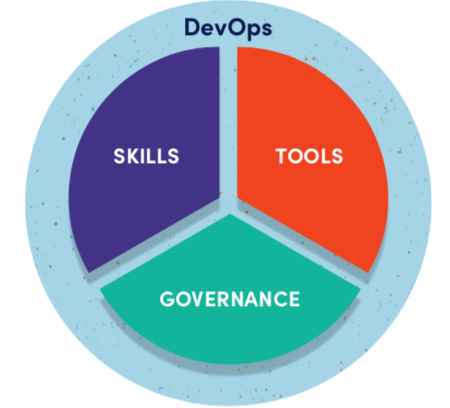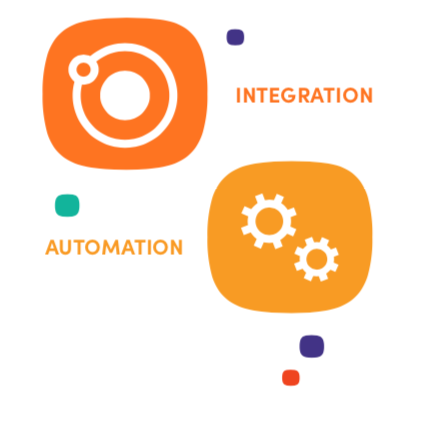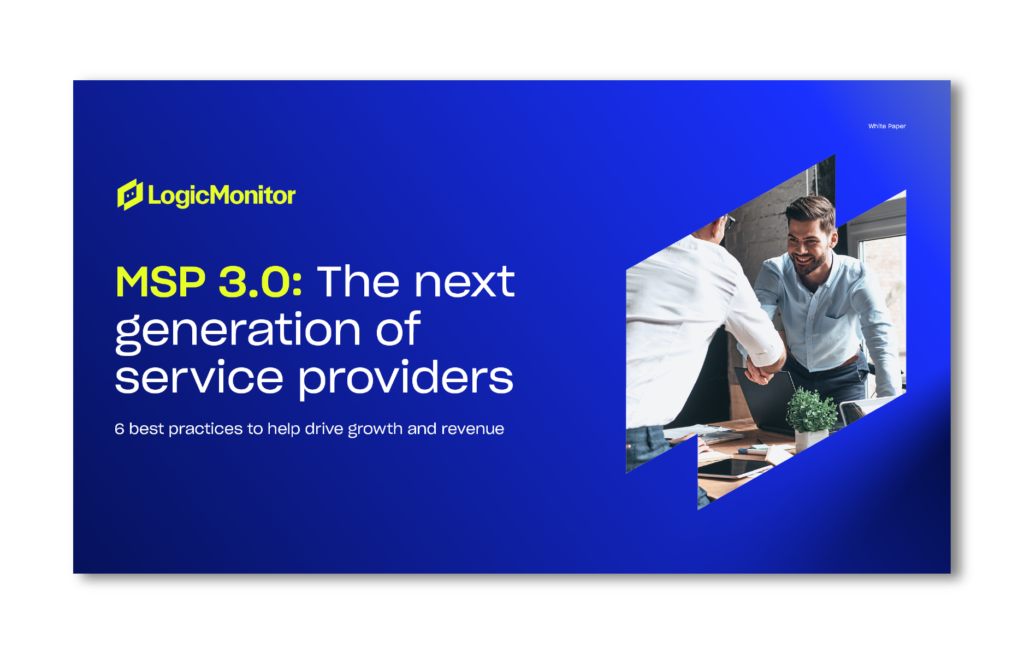6 Practices to Drive Growth and Revenue
When it comes to successful Service Providers, bigger often seems better – bigger customer base, bigger revenue stream or bigger market presence. While there is a certain amount of truth to grander elements, managing growth isn’t always easy. Perhaps you started as a VAR, but over time, it became evident that it was imperative to operate with a recurring revenue model, and you made the transition into an MSP, which is where you are now. Despite the increase in output as an MSP, you now face the challenges of both scaling your business as well as keeping up with the constant evolution that surrounds you. Bigger is better in many cases, but it also presents challenges for MSPs.
What is the solution for facing these obstacles and reaching the next level as a top MSP? Optimization and automation. Implementing and combining these two super powers allows your business to make the necessary shifts that transforms it smoothly and successfully. From creating an automated service delivery based on a DevOps mindset and beyond, optimizing and automating your MSP service delivery model is key.
Service Provider History
Ignoring the constant evolvement of technology is an uphill battle that inhibits Service Providers (SPs). While it is important to maintain a business model that is succinct and establishes itself, it is also necessary to adapt and respond to the technology evolution. The VAR model is a telltale example for SPs, many SPs started by selling gear and professional services, but eventually realized that the model lacks the promise of recurring revenue. While migrating your business to Managed Services allows for a model that builds recurring revenue, it also means facing the difficulties of scaling the business.

Suddenly, you are pulling your best engineers to help implement your new support offering, decreasing customer response time and toying with satisfaction rates. In response, do you flip-flop the process? Bring your engineers back into support, stalling the on boarding of new revenue? Which is the lesser of two evils? Unhappy customers or a stack of POs that simply stay stagnant? In any measure of success, both problems are detrimental to the business, so choosing one to sacrifice simply will not work. So, what will help you ease these problems?
Optimization and Automation
While it is common for an MSP to quickly reap the benefits initially when making the transition from a VAR model, there is a looming recurring revenue ceiling at around 3-6M due to the problems often faced with scaling the business. How do you provide growth beyond your people and team? How do you get to the next level?
First and foremost, it’s important to address that buzzword… DevOps. It can be scary for SPs to delve into a system that moves so quickly. Through building, testing, and releasing changes rapidly, frequently, and more reliably, the principles behind DevOps will help your business adjust to the needs of the market. There are a few best practices that can take your business from overstretched to efficiently progressive.
1. Get rid of “Hero Culture”
The idea of isolating a group of select, hard-working employees on specific projects or functional areas is detrimental to scaling your business. Assigning tasks to people simply because they are the only ones who are qualified to address and use a necessary skill set and knowledge base is a temporary solution to an ongoing issue. There will always be fires to be put out; doing so in an effective manner means moving from people to processes. Rather than come up with an abbreviated approach to increase the attractiveness of your company, create a sustainable system. In other words, stop selling a particular engineer for an engagement, and start selling a recipe for predictable and consistent results. The most important aspect of providing service is the end result, not the person performing the work. Automating your business beyond one person or team and developing a programmatic process allows you to develop a multitude of successful services and scale appropriately. In other words, automation leads to growth.
2. Develop a DevOps Culture
Transitioning into a DevOps culture means truly adhering Anything that can be automated should be automated, be optimized should be optimized. Move beyond “Hero Culture,” and remove obstructions from systems so that they can work seamlessly together. Combine efforts and provide everything from documentation, training and implementation to allow best practices to exist and evolve with longevity. Rather than hire an endless supply of programmers (which is an extremely difficult, if not impossible thing to do), you need to shift your internal and external work into automated processes.

Listen to the needs of your customers and develop DevOps culture that offers them reproducible results. This not only frees up your fiscal output for team members, but it also provides a more efficient model for your service delivery. IT teams and Application teams do not need to exist on opposite sides of the room. Merge your business into a cohesive system and you will cultivate an environment that can work together; which means moving quickly and iterating on processes in an agile manner, helping your business to scale.
3. Address the Looming Skills Gap
Producing results isn’t enough to scale your business; reproducing results is. Before you can automate your process, it’s important to first understand it. When it comes to a potential customer making a decision about which Service Provider (SP) to use, applications have become the key driver. If you’re not able to keep their applications readily and easily available you will lose that business. What does this mean for your SP? You need to provide constant improvements and integrations to make applications highly functional and accessible.
Create a checklist to enable a step-by-step ladder rather than reinventing the wheel time and time again. Create the checklist, and then adapt the checklist. Take problems you face along the way into account and make necessary changes in order to avoid recurring issues in the future. Once your checklist functions well, automation becomes an easy next step.
Pay attention to your team members; the skills gap is often smaller than most people think, and developing in- house talent is often a more successful and realistic approach. Think back to when RMM tools first became popular, SPs figured out how to write scripts that would automatically restart devices, dramatically cutting down on support tickets. The concept behind DevOps is similar, only on a larger scale. Look for signals like the employee who wrote a macro for Excel, or the person who excels in light programming or who has experience in Systems Center. Utilize these individuals to help automate and tie services together. Invest in growing their skill set, and avoid the empty, endless search for hard-to-secure, programmers.
4. Integrate with The Cloud
Most businesses are approaching the Cloud in stages. When it comes to their applications, often they are using apps that run both in the Cloud and on premise. As an MSP, you can take a somewhat complex process of connecting these apps and turn it into an integrated solution.
For example, you have a customer who needs the CRM to integrate to SFDC, but who also needs SFDC to connect to their accounting system. While this situation is a loose example, it certainly is not isolated, and many customers will have specific scenarios that you will need to address. When providing service that integrates this customer’s needs, it’s just as important to document the process as it is to build the integration properly. Why? You guessed it. So that you can automate the process and optimize your time and resources for when you go through the process again in the future.
While structuring your services around the public cloud, again, you need to keep in mind that not every customer is at the same point in the journey with going to the public cloud or changing their consumption models. Public cloud services like AWS and Azure are not cheaper for companies that run steady state computing, but they are more scalable, redundant and agile. So, your positioning in the conversation on the public cloud services is very important. Being able to be versatile and understand your customers’ needs is necessary to deliver the proper end result.
5. Don’t Get Caught Drowning in Technical Debt
Every time you onboard a new customer, consider that you have a certain amount of technical debt to pay.
This comes in the form of integration, implementation, and mere guidance. By installing the customer cleanly and smoothly within your service model, you prepare them to be handed off to your support team with a clean bill. Forego this process, and you inundate your support team with massive technical debt from the start, making it much less likely to get paid off in a timely manner, which ultimately leads to dissatisfaction and a loss of revenue. How can you best optimize both your support team and the onboarding process? With automation, of course!
Make a checklist for bringing on new customers so as to decrease the amount of technical debt that gets passed off to the support team, ultimately making both ends more profitable. See a new consistent issue that arises? Use the DevOps model of continual improvement to adjust your checklist to include these challenges. Now your technical debt becomes an automated bill pay, rather than an unexpected expense time and time again. Pay upfront, automate and optimize, and discover the ease and smoothness in which your business is able to scale.
6. Integrate Your Tools
Imagine needing to change hammers every time you were working with a different sized nail. The display of different sizes and capabilities might seem nice at first, but logistically speaking, it isn’t an optimal idea. Similarly, when talking about technology, tool sprawl can have negative impacts on your business. You can optimize your toolset by consolidating some of these tools. For example, with LogicMonitor, a Saas-based IT Performance monitoring platform, multiple monitoring solutions are combined into one pane of glass. Granular monitoring metrics are easily obtained through built-in automation for on-premise, cloud-based or hybrid infrastructures.

What’s better than optimizing your tool belt? Automating it, of course! Grab recurring revenue through integrating your tools by using a similar model to LogicMonitor, Now customers can buy hardware, services and monitoring from your SP, giving them insight and you a steady cash flow.
Conclusion
When it comes to the concept of “the bigger the better,” your business needs to adapt and transform across the board via automation and optimization. From ISO audits to systematic processes, provisions that adhere to DevOps create a successful service provider that is readily able to scale. The answer does not reside in hiring a slew of hardcore coders, but rather a script and cohesive system for your internal team to create, implement and abide by. Treat customers with a professional attitude, rather than an abbreviated solution, and install an environment that unites skill sets, rather than segregates them. Converse about applications and productivity, and do so through well thought-out automated and optimized approaches.
